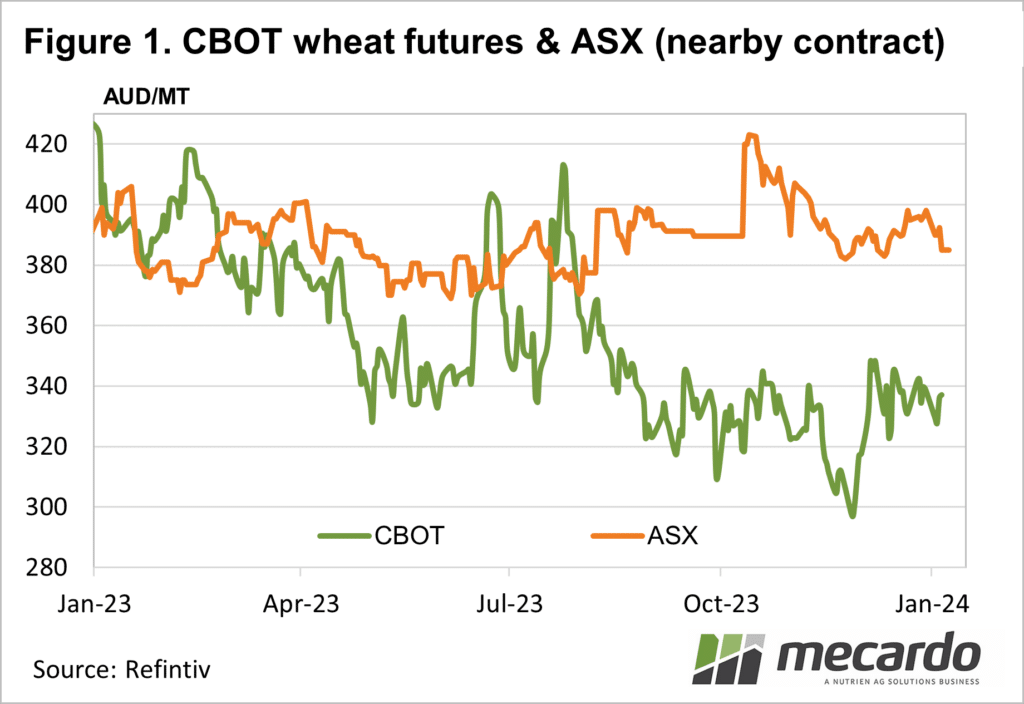The Christmas and New Year break can often throw up significant volatility in international grain markets. The lack of liquidity with many participants on holidays means that moves can be exaggerated.
In international wheat
markets at least, we again saw some volatility in futures markets. Chicago Soft Red Wheat (SRW) jumped 5% higher
on boxing day and lost it all on the second of January and more on the third. All in all, SRW closed on Friday at 611¢/bushel,
basically where it was in the week before Christmas.
The Australian dollar
has remained relatively steady over the last few weeks. At 67US¢ the AUD is at the top of the recent
range and is keeping a lid on grain prices in our terms. Figure 1 shows that while SRW was bouncing
around, ASX wheat didn’t engage in the jump higher, but did partake in the New
Year fall.
ASX Wheat futures
finished last week at $385/t, its lowest point since the middle of December. It’s hard to remember now, but there was some
reasonable harvest weather over the last couple of weeks which put some
pressure on price. With the ASX premium
to SRW still close to $50, it’s not really surprising to see ASX easing
relative to SRW.
After the trade-induced
leap higher, barley prices have reverted to following local ASW markets, like they
used to (Figure 2). As feed substitutes,
ASW and barley have eased together over harvest, with supply concerns alleviated
with more downgraded wheat hitting the market due to wet weather.
At around $320/t in
Geelong, barley is almost back where it was before China reopened trade, while
the closer proximity to export markets in WA has seen prices hold on.
International canola
values have remained relatively steady over the break. Figure 3 shows Matif Rapeseed remaining in
the $710-720/t range for much of our harvest.
Local prices have been on a downward trend over harvest, with basis to
Matif remaining at a $100 discount.
There is some
potential for canola values to rally as selling pressure eases, but we are not
seeing any sign of that yet.
What does it mean?
The rally in SRW over the break was the only real action in international markets, while local prices eased. Early in the year is usually a time of some volatility as northern hemisphere crop prospects are uncertain.
Locally, basis can rally post-harvest, however, milling wheat is already at a good premium and the price of feed is around export levels.
Have any questions or comments?
Key Points
- There was some volatility in US wheat markets over the break, but local prices eased.
- Harvest pressure continued to keep a lid on physical price.
- Post-harvest rallies seem unlikely without improvement in international values.
Click on figure to expand
Click on figure to expand
Click on figure to expand
Data sources: Refinitiv, Mecardo















